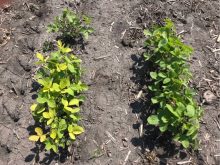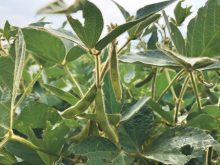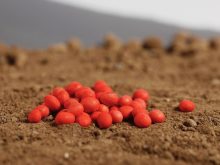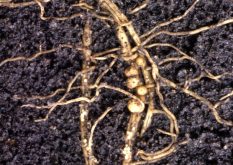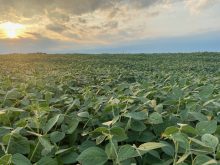Manitoba’s soybean acres had a hard time with iron deficiency chlorosis (IDC) in 2024.
Although usually a soybean problem, IDC can also pop up in other pulses, such as field peas, dry beans and fababeans. Interveinal yellowing affects new growth, and sometimes interveinal browning, or necrosis, appears.
“It’s a condition where the plant can’t take up iron. It has some challenges at that second to third trifoliate stage,” Manitoba Agriculture pulse specialist Dennis Lange said in a presentation at Manitoba Ag Days in Brandon.
Read Also

Claas brings 1000 Series SP forage harvesters to Canada
In mid-August, Claas unveiled its new line of Jaguar forage harvesters at an event in Visalia, California, deep in the heart of that state’s dairy region.
Most crops recover from the condition. However, the symptoms often mimic other issues such as nitrogen or potassium deficiency.
The tell-tale yellowing can show up as early as the V1 stage (first trifoliate). Before that point, soybeans get their iron via cotyledons. After that source is depleted, the plant acidifies its root zone to get more of the mineral from the soil into a plant-available form.
Manitoba soils are usually rich in iron, but when there’s too much moisture, soluble salts, nitrates or calcium carbonates, the plant’s ability to get that iron is impeded. Risk is further elevated by salinity linked to dry conditions, when diminishing soil moisture carries salts up in the soil profile, then leaves them behind.

“Look at your carbonate and salt levels in the field. You can get that information from your soil test,” Lange says.
If carbonates are high, in the five to six per cent rage, and soluble salts are also getting high, plants are at higher risk of IDC, he adds.
Manitoba Pulse and Soybean Growers advise producers to keep track of IDC in their fields, noting the severity, patterns and persistence of the disease. It can show up in large patches, usually at the tops of eroded knolls, but can also become a problem in field depressions.
Plants typically recover between the V5 to V6 stages, and any yield loss from the disease will be minimal. However, more yield losses can be expected if the disease persists beyond that stage.
Since in-season treatment options for IDC are slim, producers are advised to wait and see if their plants recover on their own. Prevention can be achieved by planting IDC-tolerant soybean varieties. The Manitoba Pulse and Soybean Growers website includes information on variety IDC scores.
“It’s really important when you’re looking at that list to see which (varieties) are susceptible,” Lange says.
Heavier seeding rates, improved drainage and any practices that can reduce nitrogen in soil — such as nitrogen management in other crops and cover cropping — can also cut down on IDC problems, he added.
Iron chelate products can also be used to prevent IDC, although yield loss can still happen with susceptible varieties, according to research from North Dakota State University.





